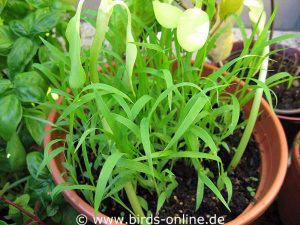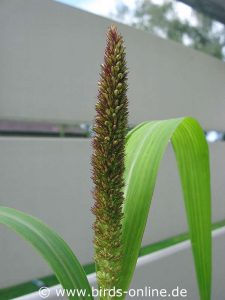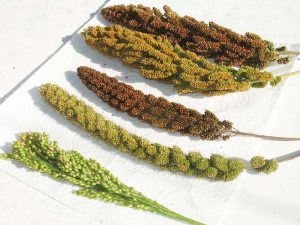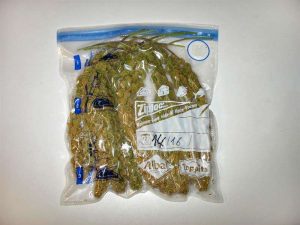- >>
- Birds Online – English
- >>
- Nutrition
- >>
- Healthy bird food from...
- >>
- Native grasses and cereals
- >>
- Half-ripe millet
Half-ripe millet
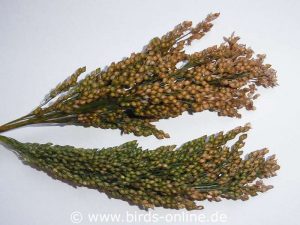
Many people are not aware of the importance of grasses in the diets of humans and animals. Cultivated cereals like wheat or oat and their ancestors all belong to the botanical family of grasses, Poaceae. In non-European countries, other cereals like millet are especially important for people’s diets. Different species of millet are also an important food source for many animals. You can for example find them in most seed mixtures for pet birds. Millet can, however, not only be offered in its ripe state but also as half-ripe panicles. The not fully ripened green millet seeds contain less energy than ripe ones, are easily digestible, and contain a variety of vital nutrients like vitamins and trace elements.
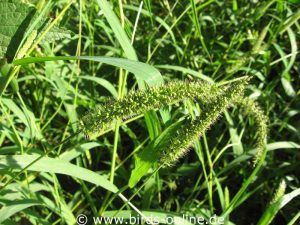
If you plant millet in your own garden or on your balcony in early spring, you can harvest half-ripe millet in about July or August – depending on the weather conditions. Millet only fully ripens in very warm and not too moist summers in Germany and countries with a similar climate. This doesn’t matter, however, since in its half-ripe state it is a special delicacy for pet birds. To grow millet yourself you can use all types of millet occurring in bird food, from foxtail millet over proso to Japanese millet. Of course, you can also plant wild millet like bristle grasses or cockspur in your garden or on your balcony. Combined with cultivated types of millet you can offer a delicious and healthy variety of seeds to your birds.
Since not all bird owners have their garden or balcony, growing your own millet is not possible for everyone. Additionally, growing these plants in areas with a cooler climate requires a bit of skill and a lot of luck with the weather. If the summer is too cool, wet, and rainy the millet plants often stay tiny, since they originate in areas with warm or even hot climate conditions. Therefore, you shouldn’t be disappointed if the millet plants in your beds or pots stay rather small.
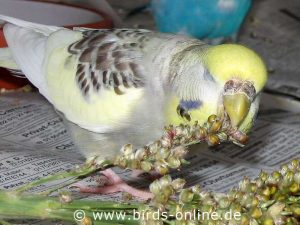
If you can’t or don’t want to grow half-ripe millet yourself, there are other ways of getting this valuable food for your birds. In Germany (and most likely also in other European countries), there are a couple of farmers growing millet and sending it to customers in its half-ripe state via mail. The owner of the website Birds-online.de had good experiences with millet from Hirse-Paradies, a company from Germany. They offer a wide selection of millets, from foxtail and proso millet to sorghum, a slightly larger species. In season, from around July to September (and only then!), you can order half-ripe millet from these German vendors – provided of course the weather conditions are not too adverse. You can best contact the vendors directly before ordering. They are always happy to give you advice, e.g., on which kinds of millet are preferred by which type of pet bird. However, most German vendors do not ship semi-ripe millet abroad. It would probably spoil on the way.
Drying half-ripe millet to conserve it is also possible. However, most birds prefer it if it wasn’t dried but frozen. If you want to dry half-ripe millet, you should ensure that it can’t go moldy. It is best to hang them loosely on a clothesline or something similar so the air can circulate the panicles until they are fully dried.
German – English translation: Sarah Wiechers

